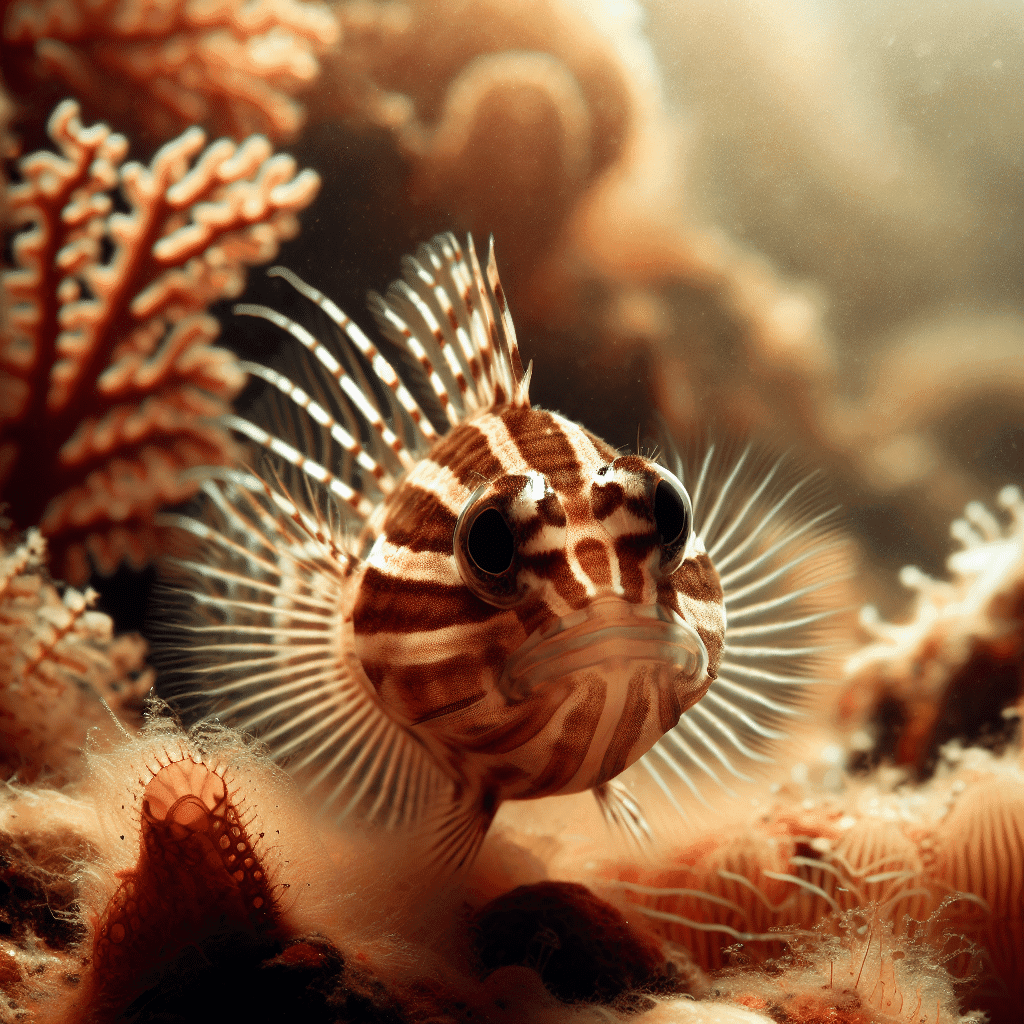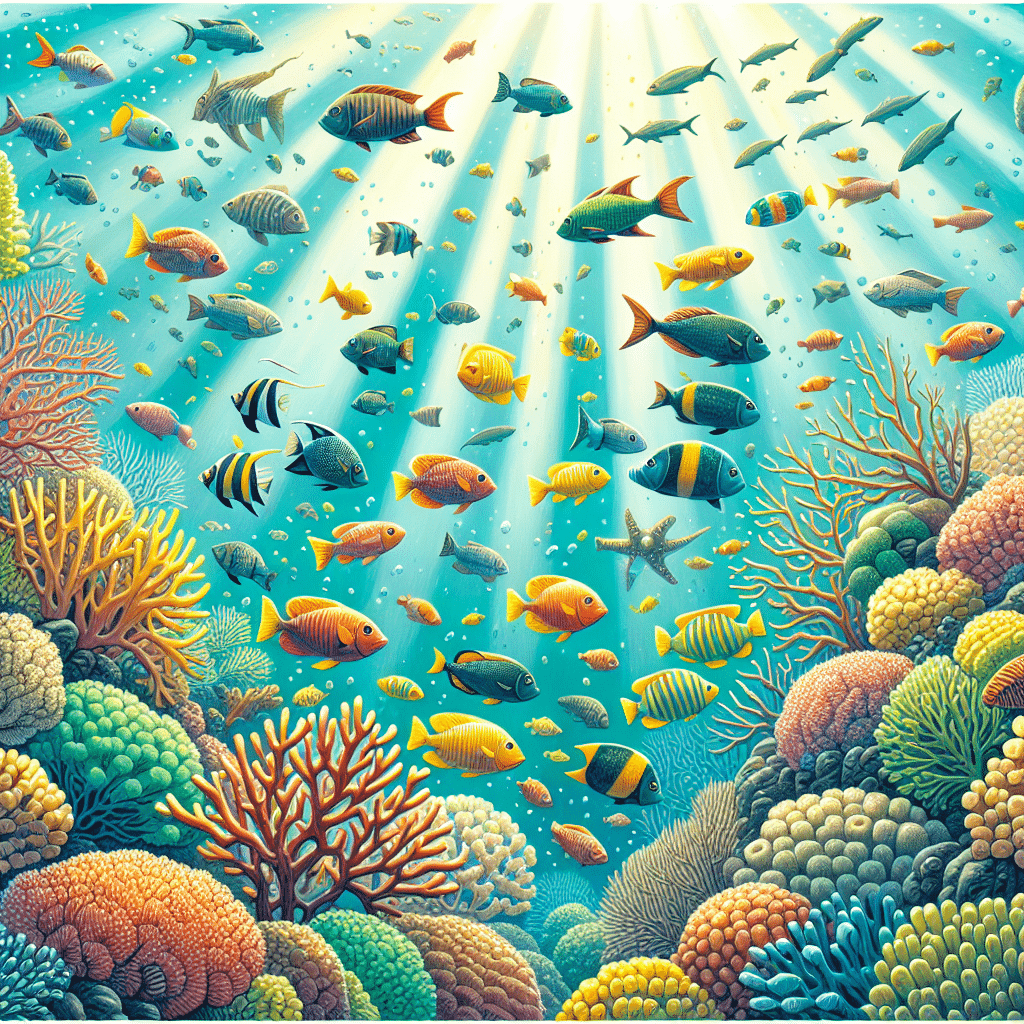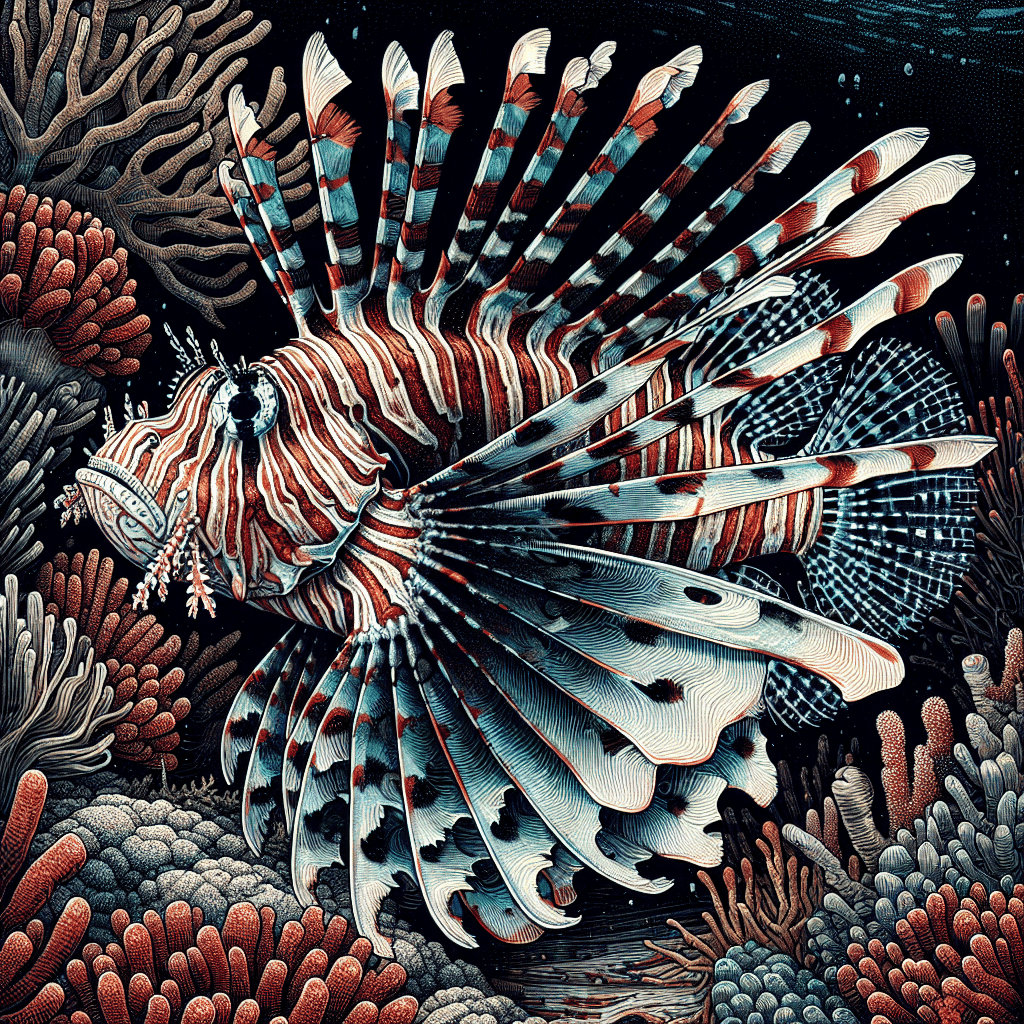Exploring Blennies
Overview of Blennies
Blennies are fascinating little fish that I’ve come to admire in the world of marine life. They are mostly small, usually found in tropical to cold seas, and their appearance can vary from moderately elongated to very long and eel-like. What really unites them is their distinct features, such as a long dorsal fin and pelvic fins that are positioned near the throat and consist of one spine and two to four rays (Britannica).
These creatures are generally bottom-dwellers, making them quite unique among fish. Although many blenny species are popular in aquariums, they thrive in their natural habitats, showcasing a variety of feeding habits, including detritivorous, herbivorous, and carnivorous diets. It’s interesting to note that while most live in shallow waters, some can dive down to depths of about 450 meters (1,500 feet).
Habitat Diversity
Blennies are known for their adaptability, inhabiting diverse environments ranging from rocky pools and sandy beaches to reefs and kelp beds. I find it particularly intriguing that they can be found in various oceans, including the Pacific, Indian, and Atlantic, in tropical, subtropical, and temperate waters worldwide (Animal Diversity Web).
Here’s a quick overview of the different habitats where blennies can be found:
| Habitat Type | Description |
|---|---|
| Rocky Pools | Shallow pools formed by the tide |
| Sandy Beaches | Areas with loose sediment and sand |
| Coral Reefs | Biodiverse underwater structures |
| Kelp Beds | Underwater forests made of kelp |
| Deep Waters | Some species venture to depths of 450 meters |
Many blennies prefer shallow, inshore, often intertidal waters, making them accessible for observation and study. Some species, like the saber-toothed blennies, are unique in that they can be free-swimming, adding another layer of diversity to their lifestyles. If you’re interested in adding some of these captivating fish to your aquarium, check out my insights on marine fish that can coexist with blennies.
Types of Blennies
Blennies are fascinating fish that come in a variety of types, each with its own unique characteristics and behaviors. Understanding the taxonomy and popular species can enhance your aquarium experience.
Blenny Taxonomy
Taxonomically, blennies belong to several families, with the two largest being Clinidae (clinids) and Blenniidae (blenniids). The Clinidae family comprises about 180 species, while the Blenniidae family includes approximately 300 species. The European eelpout, or viviparous blenny (Zoarces viviparus), is particularly interesting as it is the only fish known to nurse its young (Britannica).
Blennies are recognized for their distinctive teeth, which are closely set in a single row in each jaw. Some species even have prominent canine teeth, leading to terms like “comb-toothed” and “saber-toothed.” The Blenniidae family is the largest within its suborder, consisting of six tribes with 53 genera and 345 species (Animal Diversity Web).
Popular Blenny Species
There are over 900 known blenny species, and many of them are popular among aquarium hobbyists. Below is a table showcasing some common blenny species that you might consider adding to your reef tank.
| Species Name | Common Name | Diet Type | Notable Features |
|---|---|---|---|
| Salarias fasciatus | Lawnmower Blenny | Herbivorous | Known for controlling hair algae |
| Ecsenius bicolor | Bicolor Blenny | Omnivorous | Brightly colored with a striking pattern |
| Omocestus taeniurus | Tailspot Blenny | Herbivorous | Features a distinctive tail spot |
| Acanthemblemaria similis | Mimic Blenny | Carnivorous | Known for its mimicry behavior |
| Petroscirtes breviceps | Shorthead Blenny | Carnivorous | Prefers to hide in crevices in reef structures |
These species are generally peaceful and can be great additions to well-secured community saltwater tanks. They thrive when provided with plenty of hiding spots, like caves or crevices, where they can feel secure. If you want to learn more about their care in aquariums, check out our section on blenny care in aquariums.
Blenny Care in Aquariums
Taking care of blennies in an aquarium can be a rewarding experience. They’re fascinating little fish that add character to any reef tank. Here’s what I’ve learned about setting up their home and feeding them properly.
Tank Setup
When setting up a tank for my blennies, I always keep a few things in mind. First, they thrive in a well-maintained saltwater environment. I make sure to use a tight-fitting lid on my tank because blennies are known jumpers. It’s crucial to provide them with lots of hiding spots; they love tiny nooks and crannies to feel secure. Here’s a quick reference table for tank requirements:
| Requirement | Details |
|---|---|
| Minimum Tank Size | 30 gallons or more |
| Water Conditions | Saltwater, specific gravity of 1.020-1.025 |
| pH Level | 8.1 – 8.4 |
| Temperature | 72°F – 78°F |
I also ensure that the water quality is consistently high. Regular maintenance is essential to keep my blennies healthy. I test the water parameters regularly to avoid any issues.
Feeding Blennies
Feeding my blennies is pretty straightforward since they are not picky eaters. Most blennies fall into the omnivore category, so I provide a mix of both herbivorous and carnivorous diets. They enjoy a variety of foods, including high-quality flakes, pellets, and frozen foods like brine shrimp and mysis shrimp. Here’s a simple overview of their dietary preferences:
| Diet Type | Food Options |
|---|---|
| Herbivorous | Seaweed, algae wafers |
| Carnivorous | Brine shrimp, mysis shrimp, chopped shrimp |
| Omnivorous | Flake food, pellets, frozen food blends |
I feed them small amounts several times a day to mimic their natural feeding habits. It’s essential to remove any uneaten food after feeding to maintain water quality. If you’re interested in learning more about the care of other marine fish, check out our articles on marine fish and other species like seahorse and lionfish.
By taking care of their tank setup and feeding habits, I find that my blennies thrive and bring a lively presence to my reef tank.
Behavior and Social Interactions
Understanding the behavior and social interactions of blennies is crucial for anyone looking to keep these fascinating fish in their reef tank. They have unique traits that influence how they interact with each other and their environment.
Territorial Nature
Blennies are known for their territorial behavior. They prefer to establish a specific area in the tank that they can call their own. Many blenny species exhibit semi-aggressive tendencies, especially towards other blennies of similar size. For instance, Salarias spp., like the jeweled blenny, are particularly known for their aggressiveness, often chasing away about 90% of other blennies that enter their territory (TFH Magazine).
This territorial nature means that they do best in environments where they can claim their space without competition from other similar species, like dottybacks and damselfish. However, they can coexist with other semi-aggressive reef community species, making them a good addition to a diverse aquarium setup.
To maintain harmony, it’s best to arrange the tank with plenty of hiding spots and territories, allowing each blenny a chance to stake their claim without constant conflict.
Aggression and Compatibility
While blennies can be semi-aggressive, they often get along well with many other reef species. They are generally safe with corals but may hunt small plankton that live on the algae in the tank. This feeding behavior can actually benefit the aquarium by controlling algae growth (The Spruce Pets).
Despite their semi-aggressive nature, blennies tend to be less aggressive towards non-trophic competitors, such as damselfish. In fact, they often coexist with these fish, sometimes living within their territories. This relationship can be mutually beneficial, as it reduces competition and allows damselfish to focus more on defending their area.
Here’s a quick reference table on blenny compatibility:
| Fish Species | Compatibility with Blennies |
|---|---|
| Dottybacks | Poor |
| Damselfish | Good |
| Other Blennies | Variable (depends on size) |
| Coral | Safe |
Maintaining a balanced environment with proper tank conditions and compatible species will ensure that your blennies thrive while minimizing aggressive encounters. For more information on caring for blennies, check out our articles on marine fish and specific species like the lawnmower blenny.
Breeding Blennies
Breeding blennies can be an exciting yet challenging endeavor for any aquarium enthusiast. Understanding their mating behavior and the challenges that come with breeding can help ensure success.
Mating Behavior
Blennies exhibit fascinating mating behaviors characterized by sexual dimorphism. Males are generally larger than females and often display distinct forms of cirri on their heads and colorful patterns during courtship. As spawning approaches, males tend to showcase brighter colors (Animal Diversity Web).
During the courtship process, females often take the lead by attracting males to spawning sites. Males engage in a variety of courtship behaviors, such as changing colors, bobbing their heads, and guiding females to their nests. Spawning typically occurs in the male’s territory, which is usually a cave or crevice, where he will guard the eggs until they hatch.
| Behavior | Description |
|---|---|
| Courtship | Males display colors and bobbing movements to attract females. |
| Spawning Site | Males lead females to a cave or crevice for egg laying. |
| Egg Guarding | Males protect the eggs until hatching, which occurs in 7-10 days. |
Breeding Challenges
While breeding blennies can be rewarding, there are several challenges to consider. One of the main difficulties is the challenge of differentiating between male and female blennies. It’s often recommended to add several individuals into the breeding tank to allow them to form their own social groups, as blennies can form harems with one male mating with multiple females (The Spruce Pets).
Creating the right environment is crucial. Providing multiple caves and crevices in the tank helps the blennies establish territories and encourages natural behaviors. Additionally, it’s important to maintain a healthy breeding tank since larval blennies will require special care and supplementation during their early days.
Another challenge is that certain blennies, particularly from the Salarias spp. family, exhibit aggression toward others of their kind. About 90% of blennies entering the territory of a Salarias will be chased away, which can complicate breeding attempts. It’s beneficial to ensure that the tank has ample hiding spots and that the species are compatible with each other (TFH Magazine).
By understanding these mating behaviors and the potential challenges, I can create a more conducive environment for successfully breeding blennies in my aquarium. For more information on caring for these fish, check out our articles on marine fish or specific species like the lawnmower blenny.
Specialized Blenny Species
Blennies are fascinating fish with unique characteristics, and two specialized groups stand out: combtooth blennies and venomous fangblennies. Each has its own distinct features and care requirements that make them interesting additions to any reef tank.
Combtooth Blennies
Combtooth blennies belong to the genus Salarias, which includes around 13 species known for their comb-like teeth. They are often introduced to aquariums to help control hair algae, with the most popular being the jeweled or lawnmower blenny (Salarias fasciatus). These fish typically have bands, stripes, and spots in brown, green, and cream hues, which help them blend into the reef substrate (TFH Magazine).
| Feature | Description |
|---|---|
| Diet | Primarily herbivorous, feeding on detritus, algae, and tiny invertebrates |
| Feeding Behavior | Scrapes materials off hard surfaces; studies show they take around 3,000 bites at the substrate per day |
| Aggression | Exhibits territorial behavior, especially towards other blennies of similar size (TFH Magazine) |
The feeding habits of these blennies are quite interesting. They continuously forage throughout the day, with their peak activity around noon. They have been observed to coexist with damselfish, which can provide mutual benefits by reducing competition for territory (TFH Magazine).
Venomous Fangblennies
Fangblennies, on the other hand, are known for their unique carnivorous diet and aggressive behavior. They possess specialized fang-like teeth that they use to deliver venom to their prey. This group includes several species, and they are often larger than their combtooth counterparts.
| Feature | Description |
|---|---|
| Diet | Carnivorous, preying on small fish and invertebrates |
| Venom | Uses venom to subdue prey, which can be harmful to tank mates if not monitored |
| Behavior | Territorial and can be aggressive; best kept in species-specific tanks |
The fangblennies’ aggressive nature makes them less compatible with many other species, so careful consideration is needed when adding them to a tank. They thrive in environments where they can establish and defend their territory.
Both combtooth and fangblennies offer unique challenges and rewards for hobbyists. If you’re considering adding blennies to your reef tank, understanding their specific needs and behaviors is crucial for creating a harmonious environment. For tips on maintaining your tank, check out our section on marine fish care.
Blenny Diet and Feeding Habits
Understanding the feeding habits of blennies is essential for maintaining their health and well-being in a reef tank. Depending on their species, blennies can be herbivorous, carnivorous, or omnivorous. I’ve gathered some insights into the diets of both herbivorous and carnivorous blennies.
Herbivorous Blennies
Herbivorous blennies, like the popular lawnmower blenny, primarily feed on algae. They play a crucial role in controlling algae growth in aquariums. These fish are voracious herbivores and often help maintain a clean tank environment.
| Feeding Behavior | Details |
|---|---|
| Main Food Sources | Algae, detritus, tiny invertebrates, fish eggs |
| Feeding Technique | Scraping material off hard surfaces like coral rock |
| Feeding Frequency | Can be fed frozen preparations, meaty foods, or pelletized foods depending on algae availability |
| Example Species | Lawn Mower Blenny (Salarias fasciatus) |
Blennies like the Salarias species focus on detritus and algae, continuously grazing throughout the day. Studies show that the jeweled blenny can take around 3,000 bites at the substrate per day, with a peak feeding time around noon (TFH Magazine).
Carnivorous Blennies
Carnivorous blennies, on the other hand, have a diet that consists mainly of meaty foods and small invertebrates. These blennies are not as common as herbivorous types, but they still provide diversity in feeding choices for aquarium hobbyists.
| Feeding Behavior | Details |
|---|---|
| Main Food Sources | Small invertebrates, meaty foods |
| Feeding Technique | Foraging in the water column or at the substrate level |
| Example Species | Venomous fang blennies |
Most blennies are not picky eaters and adapt well to a variety of diets, making them easy to care for in a community tank. It’s crucial to provide a balanced diet that caters to their specific needs, ensuring they remain healthy and vibrant. For more information on tank setups and care, check out our articles on marine fish and blenny care.
Maintenance Tips for Happy Blennies
Caring for blennies in my aquarium has been a rewarding experience. These lively little fish not only add color to my tank but also have unique needs that I’ve learned to accommodate. Here are some maintenance tips that I’ve found helpful for keeping my blennies happy and healthy.
Tank Requirements
When setting up a tank for blennies, it’s essential to mimic their natural habitat as closely as possible. Here are some key factors to consider:
| Requirement | Details |
|---|---|
| Tank Size | Minimum of 20 gallons for a small group |
| Substrate | Fine sand or crushed coral to allow for burrowing |
| Decor | Rocks and caves for hiding places |
| Water Flow | Moderate; blennies prefer calm waters |
| Lighting | Moderate lighting to encourage algal growth |
Blennies thrive in a well-structured environment, so providing ample hiding spots and adequate swimming space is crucial. They love to graze on algae, so having some rocks with a healthy film of microalgae will keep them content. For more information on marine fish care, check out our section on marine fish.
Water Quality Essentials
Maintaining optimal water quality is vital for the health of my blennies. Here are the key parameters I keep an eye on:
| Parameter | Ideal Range |
|---|---|
| Temperature | 74°F to 78°F (23°C to 26°C) |
| pH | 8.1 to 8.4 |
| Salinity | 1.020 to 1.025 specific gravity |
| Ammonia/Nitrite | 0 ppm (undetectable) |
| Nitrate | Less than 20 ppm |
Regular water changes help maintain these parameters, and I use a quality water testing kit to monitor levels. Keeping the water clean and well-oxygenated is critical for avoiding stress and disease in blennies. Additionally, they are not picky eaters and do well with many saltwater community diets, as noted by Live Aquaria.
By ensuring proper tank setup and water quality, I’ve created a thriving environment for my blennies. These little fish are fascinating to observe and contribute to the overall health of my reef tank. If you’re interested in more specific feeding habits, feel free to explore our section on blenny diet and feeding habits.



